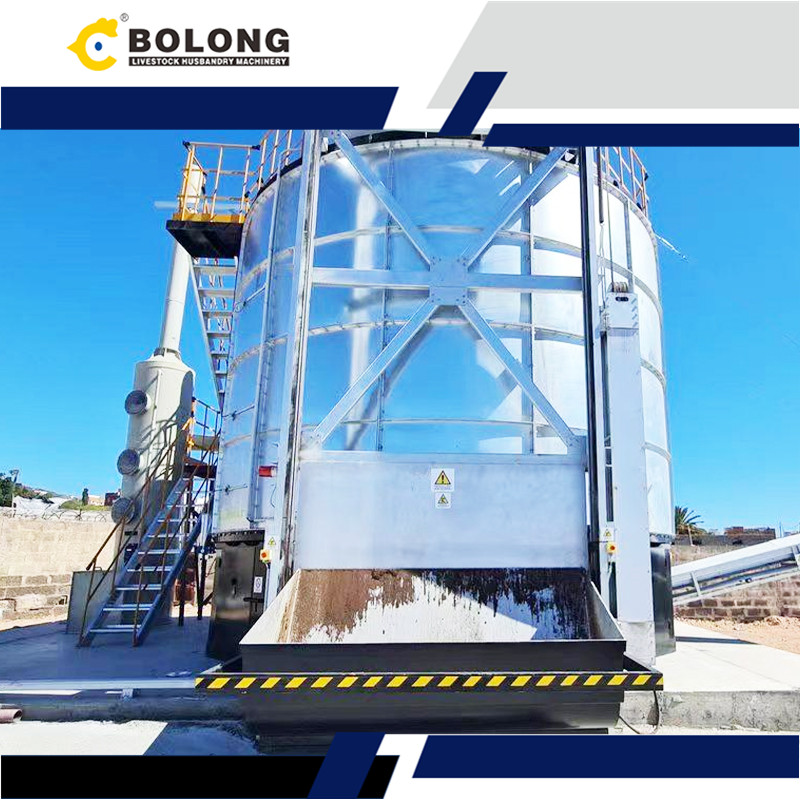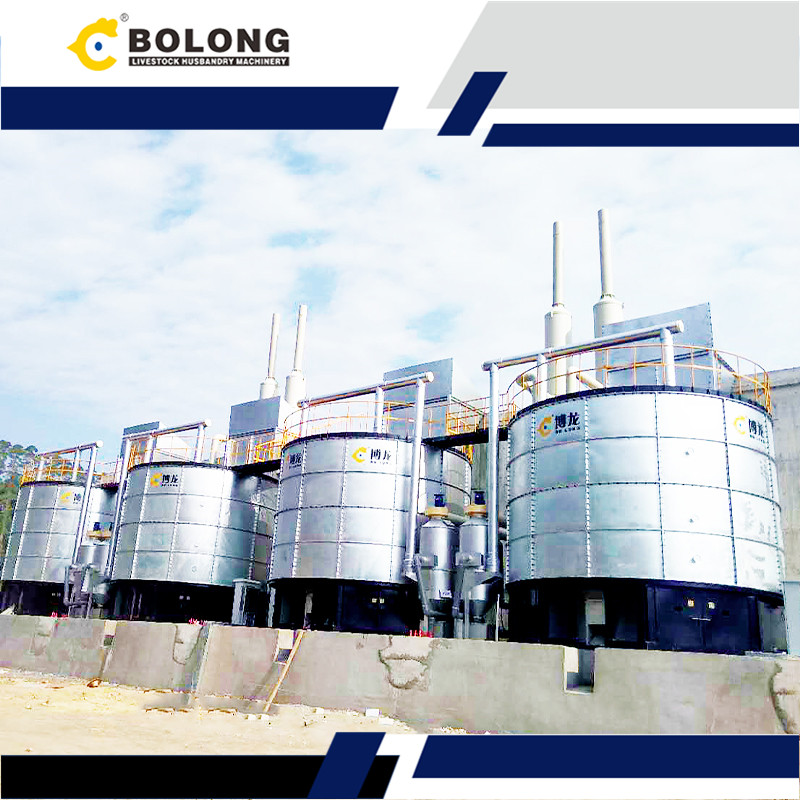The International Livestock Expo – ILDEX PHILIPPINES 2025 is set to take place from August 27–29 at the SMX Convention Center in Manila, Philippines! Henan Bolong will showcase its core equipment and livestock manure solutions at Booth No. C11.
Learn how to use a compost tower effectively for sustainable gardening practices. This comprehensive guide covers everything from setting up your compost tower to troubleshooting common issues. Start composting today and enrich your garden while reducing waste!
Gardening is not only a rewarding hobby but also an opportunity to contribute to a healthier planet. Composting is a key practice in sustainable gardening, and a compost tower can make the process even more efficient. In this article, we will explore the ins and outs of using a compost tower effectively, guiding you through the steps to create nutrient-rich compost to nourish your garden while reducing waste. Whether you are an experienced gardener or just getting started, our comprehensive guide will equip you with the knowledge and expertise to make the most of your compost tower.
To successfully use a compost tower, it’s essential to grasp the fundamental concepts behind composting. Let’s delve into the key elements that form the foundation of effective composting:
Composting is a natural process of decomposition, where organic materials break down into nutrient-rich humus. The compost tower facilitates this process by providing an environment that encourages the growth of beneficial microorganisms responsible for decomposition.
Select a suitable spot for your compost tower. It should be placed on level ground with good drainage. Ensure it is easily accessible for adding materials and turning the compost.
For successful composting, balance is essential. Use a mix of “green” materials (nitrogen-rich, like kitchen scraps and grass clippings) and “brown” materials (carbon-rich, like dry leaves and straw) to maintain the right carbon-to-nitrogen ratio.
Start by placing a layer of coarse materials like twigs or straw at the bottom of the compost tower. Layer green and brown materials alternately, sprinkling a handful of garden soil between each layer to introduce beneficial microbes.
Regularly monitor the compost temperature and moisture levels. Turn the compost every few weeks with a compost aerator or shovel to aerate the pile and accelerate decomposition.
Once the compost is dark, crumbly, and smells earthy, it’s ready to use! Add this nutrient-rich compost to your garden soil to boost plant growth and overall soil health.
Now that you have a basic understanding of composting let’s take a step-by-step approach to using a compost tower efficiently:
Before setting up your compost tower, gather all the necessary materials. You’ll need a compost tower or bin, a mix of green and brown compost materials, a compost aerator or shovel, and garden soil.
Select a compost tower that suits your gardening needs and available space. Options include rotating compost bins, stackable bins, or DIY compost towers constructed with wire mesh or wooden pallets.
Position the compost tower in the chosen location. Ensure proper aeration and drainage by placing it on a bed of small twigs or straw. Remember, accessibility is key!
Start the composting process by adding a layer of coarse materials like twigs at the bottom. Then, layer green and brown materials, sprinkling garden soil in between. Moisten the layers as you build to maintain adequate moisture levels.
To speed up decomposition, turn the compost every two to three weeks. This helps mix the materials, introducing oxygen and aiding in the breakdown of organic matter.
Compost microorganisms work best within specific temperature and moisture ranges. Monitor these factors and make adjustments if necessary to optimize composting efficiency.
Encountering challenges is normal in composting. Address common problems like foul odors, slow decomposition, or pests with simple solutions to keep your compost on track.
A compost tower can be used in various gardening applications to enhance plant growth and maintain garden health. Let’s explore some specific scenarios where using a compost tower can be highly beneficial:
Using compost in vegetable gardens boosts soil fertility, improves water retention, and provides essential nutrients to produce healthy, vibrant crops. With a compost tower, you can easily maintain a steady supply of nutrient-rich compost to nurture your vegetable garden.
Flower beds thrive when enriched with organic matter. Compost provides a balanced blend of nutrients, promoting robust blooms and enhancing the overall aesthetic of your garden. A compost tower ensures a continuous supply of compost to nourish your flower beds.
Fruit trees require adequate nutrition for optimal fruit production. Applying compost around the base of fruit trees improves soil health, encourages beneficial soil organisms, and enhances fruit quality. The compost tower simplifies the process of compost application.
Container gardening relies on a fertile growing medium, and compost is an excellent addition to achieve this. By using a compost tower, you can easily create compost to mix into your container soil, ensuring your potted plants receive the nutrients they need.
Achieving a lush, healthy lawn involves nourishing the soil beneath the grass. Compost application enhances soil structure and stimulates healthy root growth, resulting in a greener and more resilient lawn. A compost tower enables you to generate compost for lawn care needs.
Maintaining a successful compost tower requires consistent effort and attention. Follow these tips to ensure your composting experience remains fruitful:
Achieve the right balance of green and brown materials in your compost tower to create nutrient-rich compost. Avoid adding meat, dairy, or diseased plant materials, as they may attract pests or introduce pathogens.
Keep an eye on compost moisture levels. The compost should be damp, similar to a wrung-out sponge. If it’s too dry, add water, and if too wet, incorporate dry materials like straw to improve aeration.
Select a suitable compost aerator based on the size of your compost tower and personal preference. Compost aerators with multiple prongs or a cranking mechanism are popular choices.
Turning the compost ensures even decomposition and prevents the formation of anaerobic pockets. Aim to turn the compost every two to three weeks, or more frequently if you notice slow decomposition.
Occasionally inspect your compost for pests and weeds. Remove any unwanted visitors and avoid composting weed seeds to prevent spreading them later when using the compost.
Harvest compost when it reaches a dark, crumbly texture and earthy smell. Use the finished compost to enrich your garden soil, and consider creating a new compost batch with any remaining materials.
A: The composting process typically takes between 2 to 6 months, depending on factors such as compost ingredients, weather conditions, and compost maintenance.
A: Yes, kitchen scraps like fruit and vegetable peels, coffee grounds, and eggshells can be composted in a compost tower. Avoid adding meat, dairy, or oily food items.
A: It’s recommended to turn the compost every two to three weeks to maintain proper aeration and accelerate decomposition.
A: Once the compost is fully decomposed and has an earthy smell, it’s safe to use on plants. Ensure there are no large uncomposted materials that may attract pests.
A: A slight earthy smell is normal, but foul odors usually indicate an imbalance in the compost pile. Adjust the compost materials and aerate the pile to address the issue.
A: While you can compost weeds, avoid adding any with mature seeds to prevent the spread of weeds later when using the compost.
Using a compost tower is a rewarding and environmentally friendly way to enrich your garden while reducing waste. This comprehensive guide has equipped you with the knowledge and expertise to effectively use a compost tower in various gardening applications. Remember to balance compost ingredients, monitor moisture levels, and regularly turn the compost to achieve optimal results.
By integrating composting into your gardening routine, you’ll witness healthier plants, improved soil structure, and a flourishing garden that reflects your commitment to sustainable practices.
So, are you ready to embark on your composting journey with a compost tower? Start composting today and witness the transformative power of turning waste into valuable nutrients for your garden.

The International Livestock Expo – ILDEX PHILIPPINES 2025 is set to take place from August 27–29 at the SMX Convention Center in Manila, Philippines! Henan Bolong will showcase its core equipment and livestock manure solutions at Booth No. C11.

